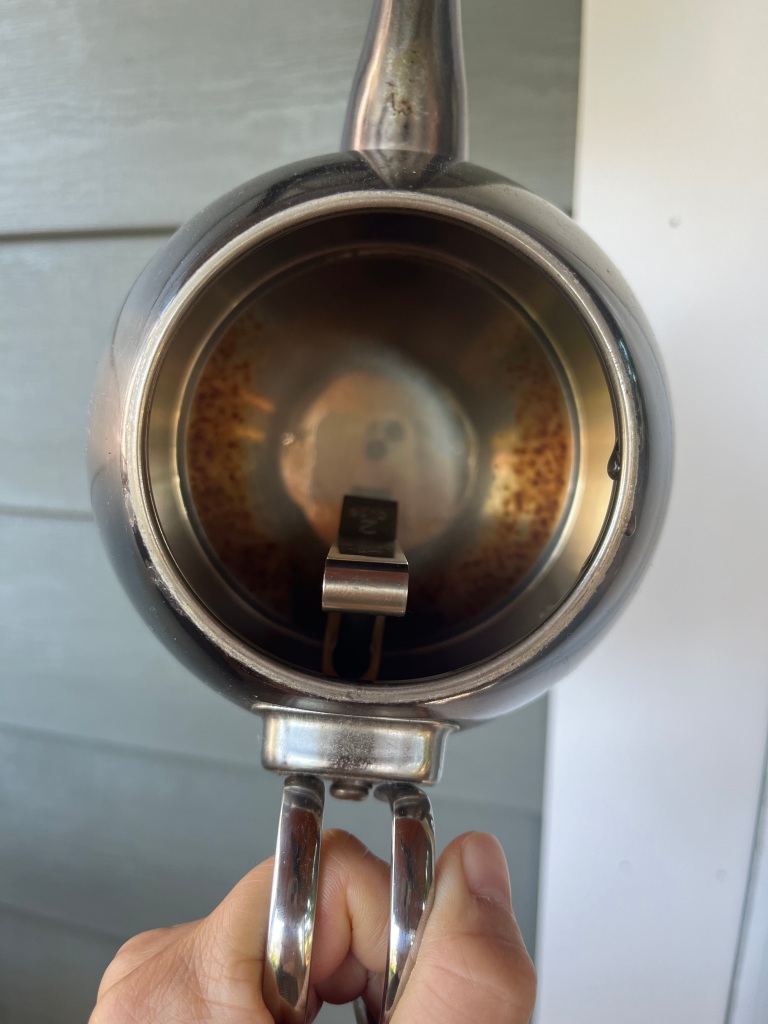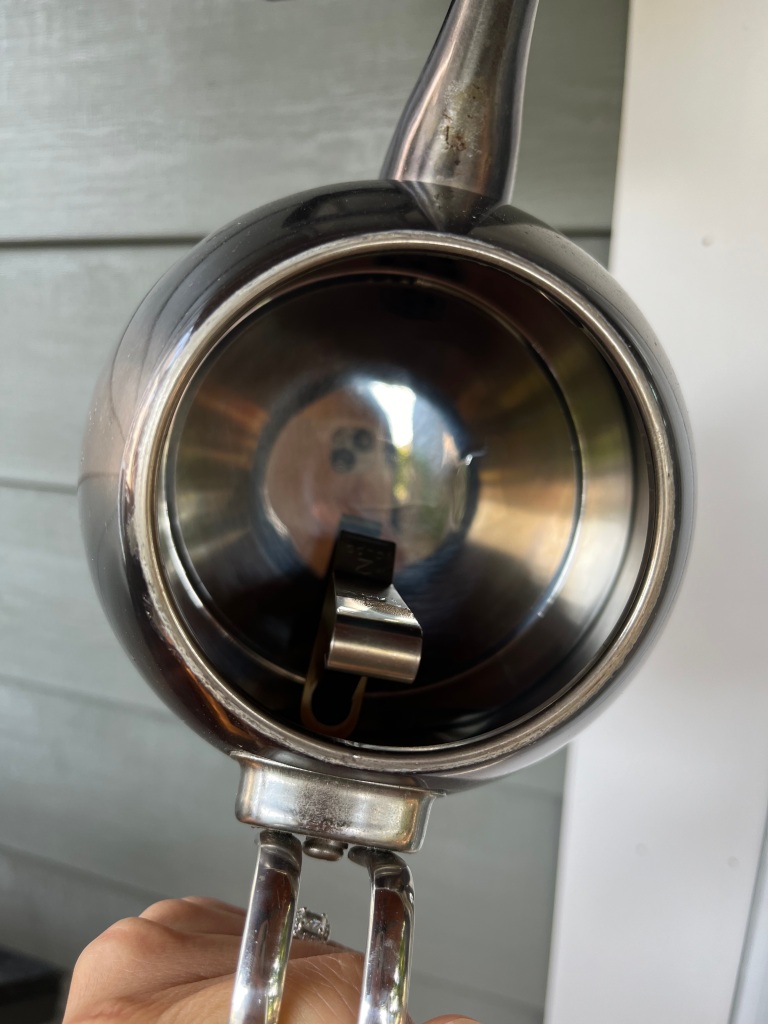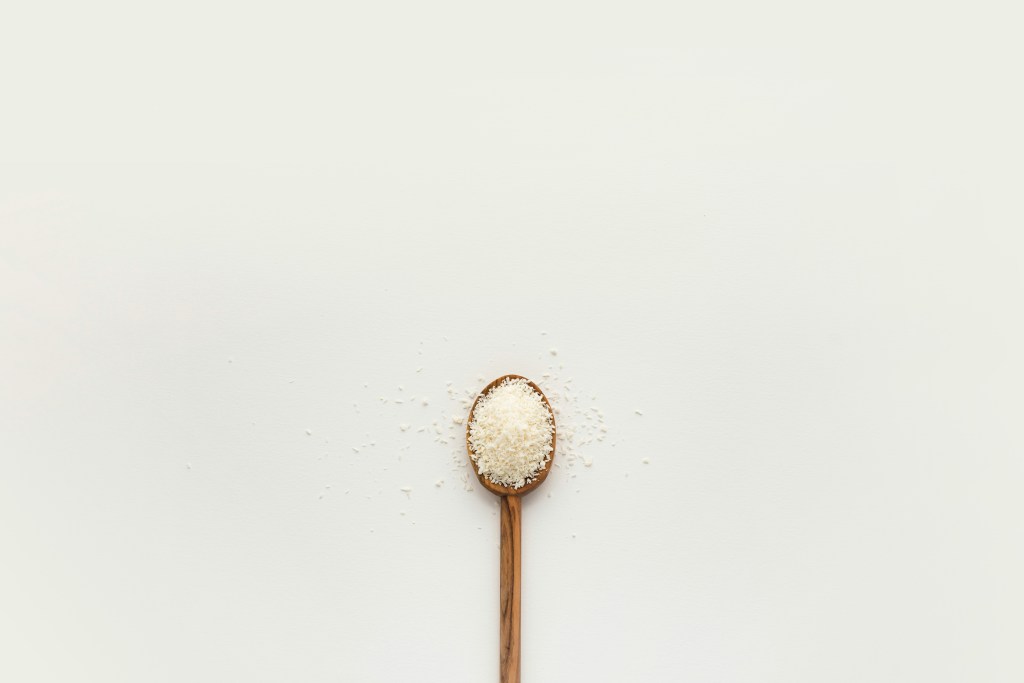Have you heard of citric acid? While the name might sound unfamiliar, you can probably guess what it is: it’s the acid found in citrus fruits! I bought some citric acid powder to make dishwasher tablets a while back. While that recipe didn’t work out, I’ve been finding lots of other great uses for it!
- Descale kettle: to get rid of mineral build up in your kettle, cover the bottom of the kettle with a tablespoon of citric acid and pour a little hot water in. Allow the mixture to sit for a few hours and rinse! For tough buildup, you may need to let the mixture sit overnight and use a bottle brush for a swirl before rinsing. No hard scrubbing necessary though, in my experience.
- Dissolve rust: I accidentally left our box cutter outside this week and it became covered in rust after a rainy day. A quick Google search showed that citric acid is great for getting rid of rust! I mixed a tbsp with hot water and dipped the blade in it – within minutes, the rust completely disappeared!
- Make a hair rinse: I learned this from Polly! Similar to an apple cider vinegar rinse, citric acid hair rinse is wonderful for people who have hard water or buildup in their hair from products like shampoo bars. Polly suggests 1/8 tsp per cup of water, and this ratio has worked well for me. A little goes a long way!
- Clean shower: dilute 6 part water with 1 part citric acid in a spray bottle. Spray, wipe and done! It gets rid of soap scum like a champ.
- Use in place of lemon juice or vinegar: dissolve 1/2 tsp citric acid in 2 tbsp of water, and you can use that instead of 2 tbsp of lemon juice or vinegar in canning or cheese recipes like ricotta or paneer. (see more cooking ideas using citric acid here).


Before and after descaling. Limescale is typically white, but apparently the brown color usually indicates iron in the water.
When I originally posted about citric acid on Instagram, I got a question from a reader asking where citric acid comes from and whether it’s safe to eat so I did a little bit of research. Citric acid is naturally found in many fruits and vegetables (like lemons and tomatoes), and up to the early 1900s, citric acid was extracted directly from citrus fruits, mostly in Italy – an expensive and resource intensive process. (Read more here).
In the last century, scientists have discovered that citric acid can also be made using Aspergillus niger: a black mold that creates citric acid when it feeds on sugar, and that’s how nearly all commercial citric acid is manufactured today. Except for one 2018 case study I found that examined 4 patients who might have had allergic reactions to manufactured citric acid (but not citrus fruits), there wasn’t any research that suggests that manufactured citric acid could be unsafe. It is also commonly added to commercially produced foods, medicines, supplements, and cleaning agents – so for most people, there’s probably nothing to worry about.* But if you are concerned or are particularly sensitive to mold, you can always resort to good ol’ lemons.
Where to buy citric acid
I don’t see it often in stores, but citric acid is super easy to find online. I’ve purchased it for pretty affordable prices on nuts.com. Mountain Rose Herbs is another retailer I like.
* A small rant about safety of food additives
In the US, food additives are regulated by the Food and Drug Administration. Since it is burdensome and unrealistic for the agency to review every single ingredient used in food production, the agency created a designation for common ingredients like salt and vinegar called GRAS, “Generally Recognized as Safe”, in 1958. However in 1997, the FDA introduced a new rule that allowed companies to decide for themselves whether an ingredient qualifies as GRAS and report the designation to the FDA voluntarily. Since then, thousands of food additives have been added to our food supply, effectively with no federal oversight. This is not only confusing to consumers (a Consumer Report survey found that “77 percent of respondents believed that ‘GRAS’ means the FDA has evaluated the ingredient and deemed it to be safe”); the lack of oversight truly may leave consumers at risk for unsafe ingredients – the government’s own accountability office agrees!
When the Food Additives Amendment was adopted in 1958, manufactured citric acid was one of the ingredients that was granted GRAS status, due to the lack of documented harm in its history of prior use. However, science has advanced by leaps and bounds since then, and the safety of citric acid should probably be probed further by the FDA given it is such a widely used ingredient. On the other hand, I think we would all go crazy trying to decipher every single additive in our food, cosmetics, and pharmaceuticals – hence my recommendation to “not worry about it” if you don’t have particular reasons to.
#SYSTEMCHANGE!

Leave a comment